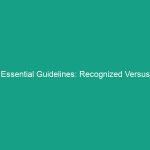Introduction
In the realm of Occupational Health and Safety, the significance of Fall Prevention cannot be overstated. Falls are one of the leading causes of workplace injuries and fatalities. According to the Occupational Safety and Health Administration (OSHA), falls account for a significant percentage of workplace injuries each year, making the implementation of effective fall Prevention strategies a critical aspect of any Health, Safety, and Environment (HSE) program. Understanding the various risks associated with falls can save lives and reduce workplace injuries, ensuring a safer environment for everyone.
This article aims to provide comprehensive guidelines on essential fall prevention measures, discussing regulatory frameworks, best practices, case studies, challenges, and future trends. By understanding these elements, employers and employees can work together to mitigate risks associated with falls and enhance overall Workplace Safety.
Regulatory Frameworks for Fall Prevention
To effectively implement fall prevention strategies, it is crucial to understand the regulatory frameworks established by various authorities. These Regulations serve as guidelines that organizations must follow to ensure a safe working environment.
Key Regulations and Standards
In the United States, osha is the primary regulatory body that oversees Workplace Safety. OSHA has established specific regulations that focus on Fall Hazards, particularly in industries such as construction, manufacturing, and warehousing. For example, OSHA’s Standard 1926.501 mandates that Fall Protection must be provided at elevations of six feet in the construction industry and at four feet in general industry operations. These standards outline the necessary Precautions that must be taken to prevent falls, including the use of guardrails, safety nets, and personal fall arrest systems (PFAS).
In addition to OSHA regulations, various states have their own Safety regulations that may impose stricter requirements. Employers should be aware of both federal and state regulations to ensure full compliance and to protect their workers from fall-related injuries.
The Importance of Compliance
Compliance with fall prevention regulations is not just a legal obligation; it is a moral responsibility. Employers who prioritize safety typically see enhanced employee morale, reduced absenteeism, and lower insurance costs. Moreover, failure to comply with safety regulations can result in hefty fines and legal repercussions, further emphasizing the importance of maintaining a robust safety program that includes comprehensive fall prevention measures.
Best Practices for Fall Prevention
Implementing Best Practices for fall prevention is vital in reducing risks and creating a safer workplace. Here are some essential strategies that organizations can adopt:
1. Conduct Regular Risk Assessments
Regular risk assessments are fundamental in identifying potential fall Hazards in the workplace. These assessments should evaluate floor conditions, working heights, and the use of equipment. By understanding where fall risks exist, employers can develop targeted strategies to mitigate those risks effectively.
2. Provide Safety Training
Training employees on safe working practices is crucial. All workers should receive comprehensive training on fall Hazards, proper use of Personal Protective Equipment (PPE), and emergency response Procedures. Regular refresher courses can help reinforce safety practices and keep fall prevention at the forefront of employees’ minds.
3. Utilize Proper Equipment
Employers must ensure that appropriate fall protection equipment is available and used correctly. This includes harnesses, lanyards, guardrails, and safety nets. Regular inspections of this equipment are necessary to ensure that it is in good working condition and meets safety standards.
4. Implement Safe Work Procedures
Establishing and enforcing safe work procedures tailored to specific tasks can significantly reduce fall risks. For example, when working at heights, employees should follow protocols that include securing ladders and scaffolding, using fall protection systems, and ensuring that work areas are free from clutter and hazards.
5. Encourage Reporting of Hazards
Creating a culture where employees feel comfortable reporting potential hazards is essential. An open line of communication allows for the identification and rectification of fall risks before they lead to accidents. Employers should encourage workers to report unsafe conditions without fear of retaliation.
Case Studies: Successful Fall Prevention Initiatives
Real-world examples often illustrate the effectiveness of fall prevention strategies. Here are a few notable case studies that highlight successful initiatives:
Case Study 1: Construction Company Overhaul
A construction company faced numerous fall-related incidents over the years, leading to increased insurance costs and employee turnover. In response, the company implemented a comprehensive fall prevention program that included enhanced training, regular safety audits, and updated equipment. As a result, the company reported a 50% decrease in fall incidents within the first year, demonstrating the effectiveness of a proactive approach to safety.
Case Study 2: Manufacturing Facility Improvements
A manufacturing facility identified that slips and falls were a significant issue on their production floor. They conducted a detailed risk assessment and found that uneven flooring was a leading cause of incidents. The company invested in floor repairs and implemented better housekeeping practices, resulting in a significant reduction in fall incidents and improved employee morale.
Challenges in Fall Prevention
Despite the best intentions, there are challenges that organizations face when implementing fall prevention measures. Understanding these challenges can help in devising effective solutions.
1. Employee Non-compliance
One of the most significant challenges in fall prevention is the non-compliance of employees with safety protocols. This can stem from a lack of understanding, complacency, or the perception that certain Safety Measures are unnecessary. Employers must continuously emphasize the importance of compliance and make safety training an integral part of the workplace culture.
2. Budget Constraints
Many organizations, especially small businesses, struggle with budget constraints that limit their ability to invest in fall prevention measures. However, it is essential to view safety as an investment rather than a cost. Allocating resources towards safety training and equipment can lead to substantial long-term savings by reducing accidents and injuries.
3. Evolving Work Environments
The modern workplace is constantly evolving, with new technologies and processes being introduced regularly. This can create new fall hazards that organizations may not anticipate. To address this, employers must remain vigilant and adapt their fall prevention strategies to accommodate changes in the work environment.
Future Trends in Fall Prevention
As technology advances, the future of fall prevention is evolving. Organizations are beginning to explore innovative solutions that leverage technology to enhance safety.
1. Wearable Technology
Wearable technology, such as smart helmets and vests equipped with sensors, can monitor worker movements and detect fall risks in real-time. These devices can alert workers and supervisors to unsafe conditions, allowing for immediate corrective action.
2. Virtual Reality Training
Virtual reality (VR) training is gaining traction as a tool for enhancing safety training. VR simulations can immerse employees in realistic scenarios where they can practice fall prevention techniques without risking injury. This engaging training method can improve retention and application of safety practices.
3. Data-Driven Safety Management
Data analytics is becoming increasingly important in the realm of Workplace Safety. Organizations can leverage data to identify trends and patterns in fall incidents, allowing them to develop targeted strategies for risk mitigation. By analyzing data, employers can make informed decisions that enhance safety protocols.
Conclusion
In conclusion, effective fall prevention is a critical component of Workplace Safety and health. By understanding and implementing the essential guidelines outlined in this article, employers can significantly reduce the risks associated with falls. Compliance with regulatory frameworks, adoption of Best Practices, learning from case studies, addressing challenges, and embracing future trends are all vital steps in creating a safer work environment.
It is imperative for both employers and employees to prioritize safety at all levels. By fostering a culture of safety and continuously improving fall prevention measures, organizations can protect their most valuable asset—their workforce. Take action today to enhance your fall prevention strategies and create a safer workplace for everyone.


